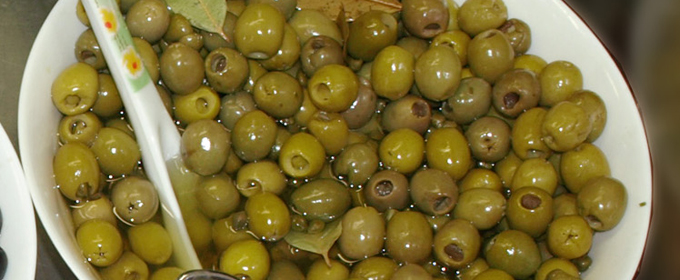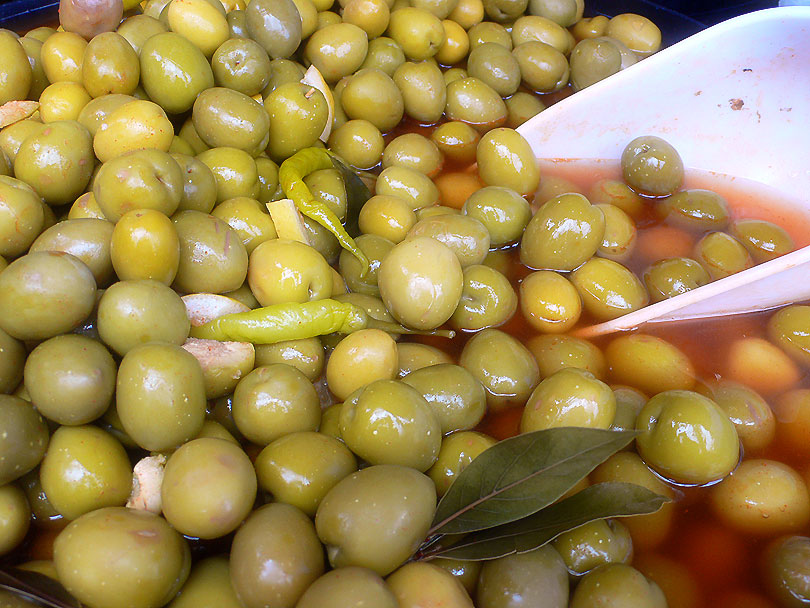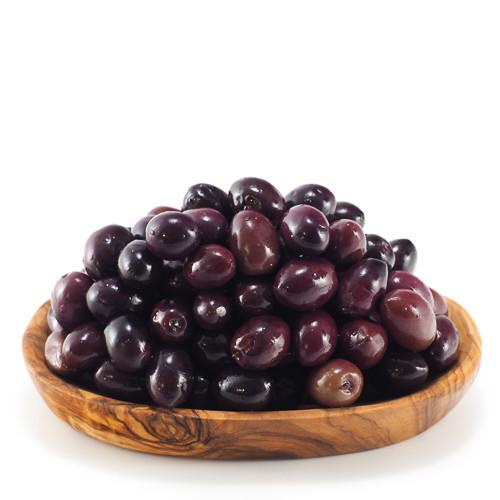
The sales of table olives have shot through the roof in Spain during the lockdown. Mainly because everyone is snacking at home and enjoying their aperitifs in their living room, on their balcony or terrace. That ice-cold beer or chilled wine with a bowl of nuts or olives can not be missed even through quarantine. However, people often think that table olives can come straight off the tree and into a jar with perhaps some seasoning, but this is not the case and far from it. The substance that renders it essentially inedible is oleuropein, a phenolic compound bitter enough to shrivel your teeth. The bitterness is a protective mechanism for olives, useful for fending off invasive microorganisms and seed-crunching mammals. In the wild, olives are dispersed by birds, who avoid the bitterness issue by swallowing them whole. Given the awfulness of the "au natural" olive, you can’t help but wonder why early humans, after the first appalling bite, didn’t shun the olive tree forever.
The olive is a drupe or stone fruit, like cherries, peaches, and plums, in which a fleshy outer covering surrounds a pit or stone, which in turn encases a seed. In the case of the olive, the outer flesh contains up to 30 per cent oil—a concentration so impressive that the English word oil comes from the ancient Greek "Elaia", which means olive. But it also has a low sugar content from 2.6-6% when compared with other drupes which have on average 12%.
Due to these characteristics, it makes it a fruit that cannot be consumed directly from the tree and it has to undergo a series of processes that differ considerably from region to region, and which also depend on the variety of olive. Some olives are, however, an exception to this rule because as they ripen they sweeten right on the tree, in most cases this is due to fermentation. One case is the Thrubolea variety in Greece, however, this is not at all common.
The oleuropein, which is distinctive to the olive, has to be removed as it has a really strong bitter taste and those who have eaten an olive straight off the tree know what I am talking about: it is not, however, pernicious to health. It just tastes terrible. Depending on local methods and customs, the fruit is generally treated in sodium or potassium hydroxide, brine or successively rinsed in aerated water, a rather complicated process.
The olive's suitability for table consumption is a function of its size, which is important for presentation. Olives between 3 and 5g are considered medium-sized, while those weighing over 5 g are large. The stone should come away easily from the flesh and a ‘flesh to stone’ ratio of 5 to 1 is considered acceptable. The higher this ratio the better the commercial value of the olives. The skin of the fruit should be fine, yet elastic and resistant to blows and to the action of alkalis and brine.
High sugar content in the flesh is an asset. The lowest acceptable level is 4%, especially in olives that undergo fermentation. For table olives, oil content should be as low as possible because in many cases it impairs the keeping properties and consistency of the processed fruit. Only in certain types of black olives is a medium to high oil content desirable.
In Spain, most of the table olives are green olives. These are obtained from olives harvested during the ripening cycle when they have reached their normal size, but prior to colour change. They are usually hand-picked when there is a slight change in hue from leaf-green to slightly yellowish green and when the flesh begins to change consistency but before it turns soft. Colour change should not have begun. Trials have been run to machine harvest table olives, but owing to the high percentage of bruised fruit they had to be immersed in a diluted alkaline solution while still in the orchard, this being said table olives are still in their majority harvested by hand. Recently harvested, the olives should be taken to the plant for processing on the same day.

Green olives are processed in two principal ways: with fermentation, which is considered the Spanish style, and without fermentation, which is considered the Picholine or American style.
In Spain the majority of olives are treated in a diluted lye solution (sodium hydroxide) to eliminate and transform the oleuropein and sugars, to form organic acids that aid in subsequent fermentation, and to increase the permeability of the fruit. The lye concentrations vary from 2% to 3.5%, depending on the ripeness of the olives, the temperature, the variety and the quality of the water. The treatment is performed in containers of varying sizes in which the solution completely covers the fruit. The olives remain in this solution until the lye has penetrated two-thirds of the way through the flesh. The lye is then replaced by water, which removes any remaining residue and the process is repeated. Lengthy washing properly eliminates soda particles but also washes away soluble sugars, which are necessary for subsequent fermentation.
Fermentation is carried out in suitable containers in which the olives are covered with brine. Traditionally, this was done in wooden casks. More recently, larger containers have come into use that are inert on the inside. The brine causes the release of the fruit cell juices, forming a culture medium suitable for fermentation. Brine concentrations are 9-10%, to begin with, but rapidly drop to 5% owing to the olive's higher content of interchangeable water.
When properly fermented, olives keep for a long time. If they are in casks, the brine level must be topped up. At the time of shipment, the olives have to be classified for the first or second time as the case may be. The original brine is replaced and the olives are packed in barrels and tin or glass containers. Sometimes they are stoned (pitted) or stuffed with anchovies, pimento, etc. The most commonly used varieties in Spain are Manzanillo and Gordal.
But after discovering this you may be thinking, whoever came up with the idea of finding a way to eat a drupe that was at first sight totally inedible and had the patience to even work it out?
Well, it is a bit of a mystery but the general consensus is that it was the Romans who most likely came up with the technique that put the olive fruit itself on the dinner table. Earlier people had discovered that olives could be debittered by soaking them in repeated changes of water, a painstaking process that took many months and was probably discovered by accident. This was somewhat improved by fermenting the olives in brine, which was marginally quicker, but the Romans found that supplementing the brine with lye from wood ashes (sodium hydroxide) cut the time required for producing an edible olive from months to hours.
About 90 per cent of the world’s olive crop goes to make olive oil. The remainder is harvested for table olives which, though there are over 2,000 known olive cultivars, are known to most of us in two colours: green and black.

Green olives, the kind found in martinis, are picked green and unripe and then cured. These are often called Spanish olives, as mentioned earlier. Tree-ripened olives, left to themselves, turn purple - not black (as you can see in the image on the left) - due to an accumulation of anthocyanin, the same pigment that puts the purple in Concord grapes.

Black olives, though labelled as “ripe” on supermarket cans, actually aren’t: these, a California invention, are green olives that have been cured in an alkaline solution, and then treated with oxygen and an iron compound (ferrous gluconate) that turns their skins a shiny patent-leather black, so they are in fact manipulated and artificial in colour.